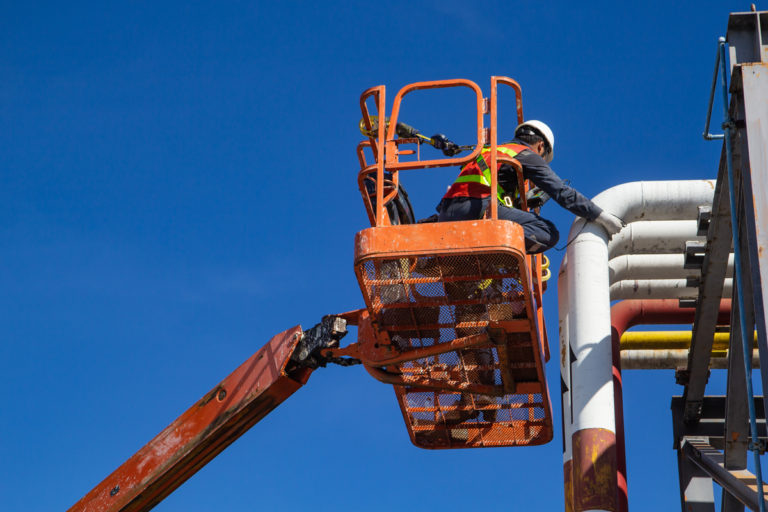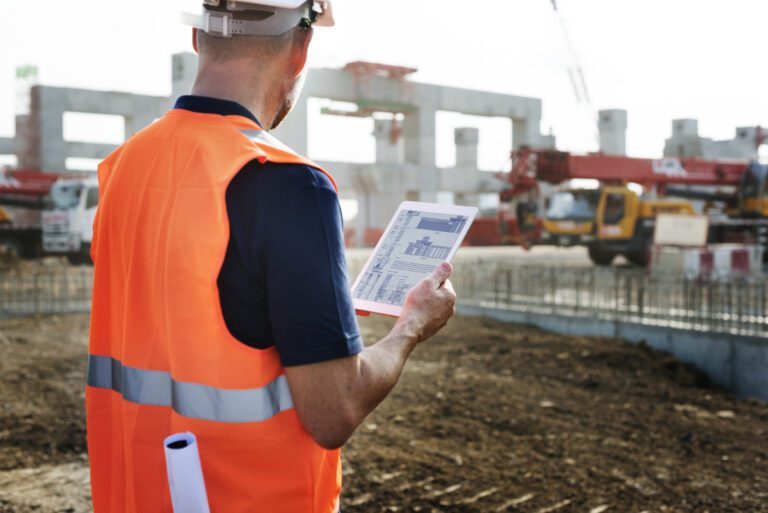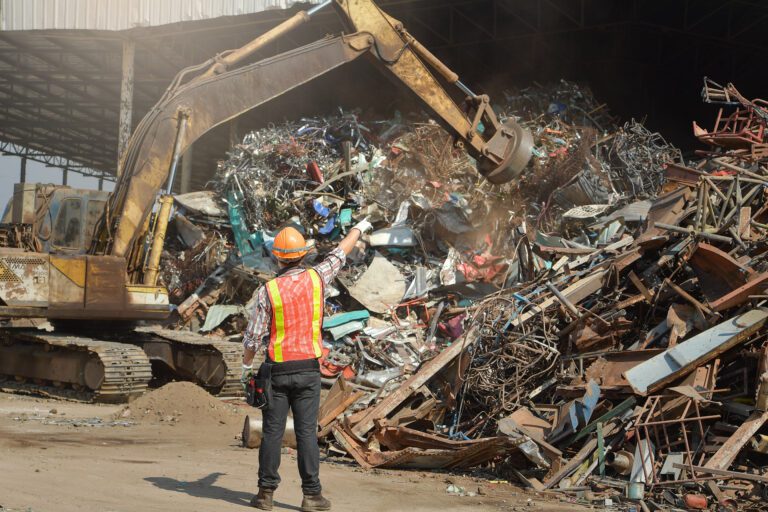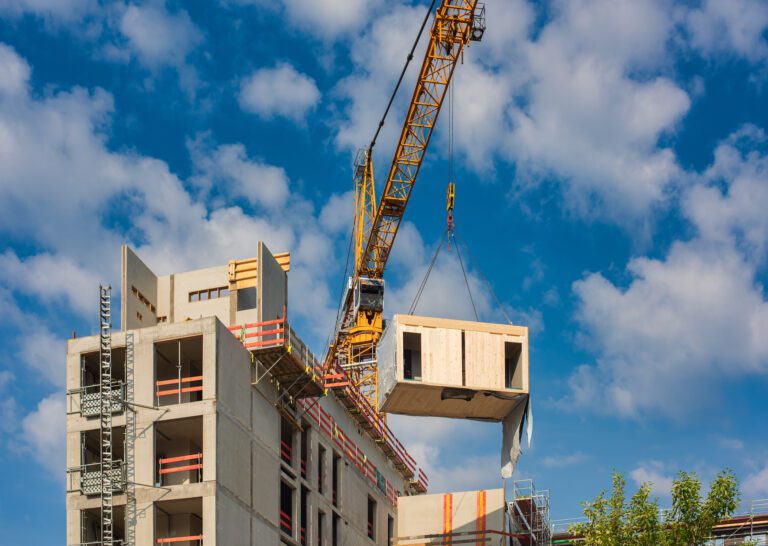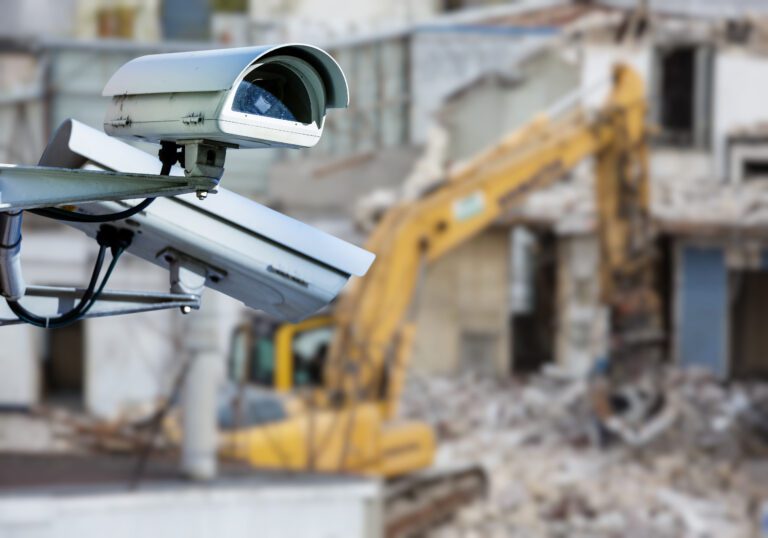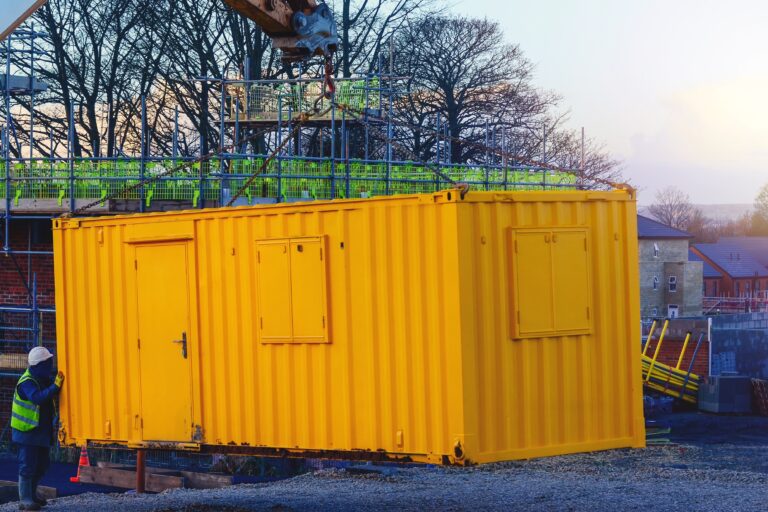6th July, 2021
Air Tools Safety Tips
When working in construction, speed & precision is key. Air tools are great for efficiency, but there are safety risks. Learn to handle them safely here.
When you’re working on a construction site or a large scale renovation, speed and precision is key.
Whether you’re drilling, bolting, sanding, greasing, or painting, having the right tools is essential to get the job done and finished to a high standard.
This ensures clients are happy with the work that has been completed and is important for a business to maintain customer satisfaction.
As well as using electric tools, lots of construction workers use air tools as they are highly useful and portable. These hand held pieces of equipment can be carried around the site as they are relatively light and easy to move around.
All workers using air safety tools should be trained on safe tool operation, inspection, compressed air hazards, PPE requirements, and tool storage. This ensures each and every job is carried out safely.
We’ll discuss more of the safety requirements on using air tools later in this blog post. If you’re a construction manager, it’s important your workforce understand and follow these safety principles when carrying out a job.
What are Air Tools?
Also known as pneumatic tools, these power tools are driven by compressed air supplied by an air compressor. This device features a gas-powered pump mechanism that repeatedly forces air into a steel container tank until the air inside becomes pressurised. The air tool is connected to a hose that is attached to the tank via an air valve.
Every pneumatic tool has a release valve or firing pin. When the trigger is pulled on the pneumatic tool, the firing "pin" is opened which in turn, opens a valve inside the tool and pressurised air flows through.
An air compressor powers a wide variety of tools depending on the requirements of your project. Common pneumatic tools include drills, paint sprayers, sanders, grinders, wrenches, and buffers, but the list is extensive.
Air tools are lightweight meaning they are very useful for a variety of applications and are great in locations which have little or no access to power.
Whilst air tools are extremely effective there are some risks involved. It’s vital anyone using these tools understand the hazards involved to ensure site safety is maintained at all times.
This is not only essential for a worker’s own safety but also for those around them.
Why is Air Tool Safety Important?
As air tools are powered by compressed air, this air generates a lot of force and noise when it is released. Without proper handling of the tools, this can lead to potential safety risks for workers. Anyone using the tools needs to be able to control them, as improper handling can lead to serious injuries including muscle tears of joint damage.
Also, tools that are not correctly maintained can fail. When this happens, parts of the tool can fly off and hit other workers in the surrounding area at high velocity. This could lead to serious injuries as the moving parts would hit the workers at a fast speed.
In addition, as air tools are very noisy, workers should not be exposed to them for long periods of time without proper hearing protection. Prolonged exposure could lead to serious hearing problems or even deafness.
If air tools are being used in your workplace, then all employees should be aware of the safety hazards associated with these types of equipment. Construction managers should consider holding regular safety meetings and ‘toolbox talks’ to educate employees about the importance of workplace safety.
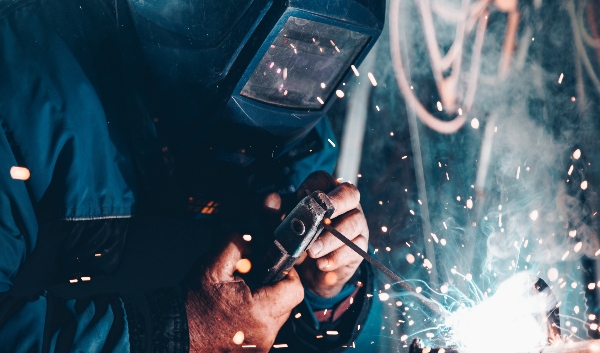
Air Tool Safety Tips
To avoid serious injuries at work, we’ve put together a list of air tool safety tips to ensure these tools are handled and used appropriately.
It’s critical you understand the below safety precautions as this helps protect yourself and others.
Always Read the Manual
When using any piece of equipment, reading the manual first should be standard. This provides tool specific information including handling, usage, warnings, and maintenance procedures to ensure the highest level of safety.
Make sure you have a good understanding of how the tool works and what materials it can be used on. Familiarise yourself with this information before using the air tool.
If you have any concerns or questions, speak to the manufacturers customer service department who will be able to help. Never assume or guess when using these pieces of equipment as it’s always best to be sure.
You should maintain all tools in line with the manufacturer’s guidance, and only replace/ repair the tool using parts recommended by the manufacturer. This helps to ensure the product won’t fail and will serve you for a long time.
Check the Air Pressure
Always check the manufacturer’s settings. If an air tool’s flow or pressure is higher than what the manufacturer’s rating states, it can result in excessive torque. This causes the tool to break and can potentially lead to serious injuries.
You can prevent this from happening by making sure the air pressure corresponds to the manufacturer’s rating before powering up the tool.
This isn’t a time consuming exercise and can prevent a huge safety risk so never miss this step before using an air tool.
Always Wear Safety Glasses or a Face Shield
Lots of things can fly about when an air tool is in use. This includes dirt, debris, dust, and other particles which can be dangerous if they end up in your eye. Not only does this cause serious irritation, but in the worst case scenario, can lead to blindness.
Therefore, it’s critical any worker operating an air tool wears high impact safety glasses or goggles. They should also wear a face shield for extra protection as this provides further coverage of their face and skin.
If you’re working in an area where other workers are present, you should also consider fitting safety glass or a shield to protect others from flying fragments.
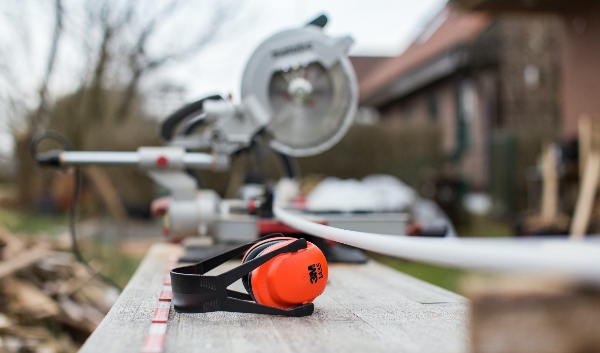
Protect Your Ears
As previously mentioned, air tools generate a lot of noise when they’re in use.
If you’re operating a pneumatic tool for a long period of time, you should wear hearing protection to prevent your ears from being damaged. This can prevent serious hearing problems and deafness as pressurised air generates unhealthy noise levels.
Even if you’re not operating the air tool, but you’re working in the surrounding area, then hearing protection is advised as you are still exposed to the loud noise. Employers should supply hearing protection to all employees working with or beside these tools.
You should also make sure that you’re wearing the hearing protection correctly, ensuring that it fully covers your ears. This increases the chance of protecting your ears from hearing loss.
Be Aware of Oil
If your air tool isn’t properly maintained, its performance will be reduced meaning it could take longer to complete a job.
When air tool performance is weak, a common solution is proper lubrication. Pneumatic tools should be lubricated with oil on a regular basis as this reduces friction and prevents water contamination. In particular, tools which are frequently used should be oiled daily. Lubricate the air tool by adding a few drops of tool manufacturer-approved oil into the air inlet connection.
However, be careful not to over lubricate as oil won’t compress. This means any excess oil inside of the air tools can cause failure or lead to reduced performance. It’s also essential you use the right oil as seals can become damaged when the wrong oil is used.
Refer back to the manual as different oils and lubricants are recommended by tool manufacturers.
Never Carry Air Tools by the Air Hose
Always carry air tools by their handles.
If you carry an air tool by the hose, it puts unnecessary pressure and stress onto these components, which can lead to early failure and/or injury.
Moreover, you run the risk of the hose becoming disconnected or damaged. If this happens and you power up the tool, the hose will begin to whirl around uncontrollably. This creates a serious safety risk to both yourself and those around you.
You should always take good care of the air hose as this helps promote tool performance and reduced maintenance. When using a hose, make sure the connections fit properly and are equipped with a mechanical means of securing the connection, such as a chain, wire or a locking device.
You should also turn off air pressure to the hose when you’re not using it as this prevents accidental discharge from occurring when you are either taking a break or have finished working for the day. As mentioned earlier in the post, never operate the air tool at a pressure above the manufacturer’s rating as this can be a safety hazard.
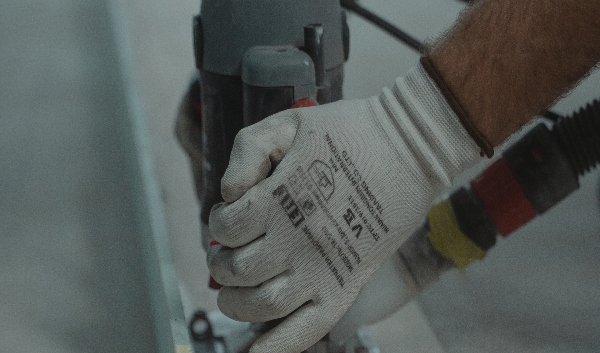
Wear Gloves
Under certain conditions, the temperature of compressed air can be low enough to cause frostbite, stiffen the operator’s fingers, or even result in cumulative trauma injuries. In these scenarios, the operator is advised to wear gloves providing there is no risk of them getting caught in any rotating or reciprocating parts.
However, gloves should only be worn under these conditions as they can impact a worker’s handling of the tool. If possible, delay using the air tool until conditions improve.
When you’re wearing gloves and operating machinery always make sure you have a good grip as this ensures the tool is handled correctly.
Focus
Focus is key when you’re working on a construction site. With any piece of machinery it’s important you concentrate whilst it’s in operation, and always make sure to direct the tool at the designated area. Never point it towards another person, or even your own clothing as even at low pressure, this can cause serious damage.
Regardless of the tool you’re using, always focus on the job at hand whilst it’s in operation and never make any careless movements. This could put both you and other workers in danger, so always act responsibly.
Also, never remove or modify safety devices. Any sort of alteration/ tampering to the trigger or other components will significantly increase the chances of injury or accidental firing of the tool.
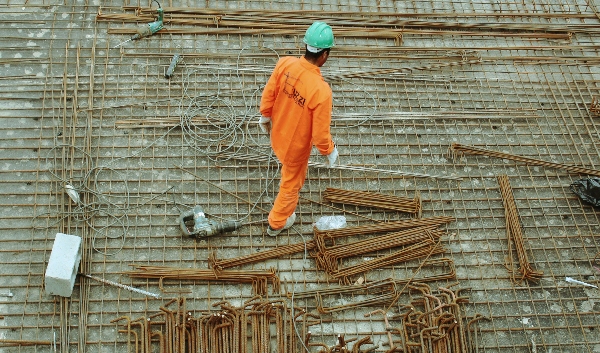
Be Aware of Tripping Hazards
When carrying air tools around a construction site, you need to be aware of potential tripping hazards. Especially when you’re moving pieces of machinery around, make sure your pathway is clear and any obstructions have been removed.
This includes but is not limited to wires, wooden panels, uneven surfaces, and loose cabling. Trip hazards can also be caused by hoses laid across walkways or curled under foot so always check the surrounding area before carrying an air tool.
It’s very important that you wear appropriate footwear when using air tools as this will prevent you from slipping on different surfaces. On a construction site, you must wear steel toe capped boots as this protects your feet from injury and gives you a firmer grip on the ground.
How YardLink Can Help
Whether you’re looking to power air tools, pressure test your pipework, or power your spraying equipment, then compressor hire is the answer.
At YardLink, we supply a great range of air compressors and airless sprayers for building professionals, decorators and handymen to use. With compact, lightweight designs, our tools are efficient, economical and easy to use.
We’re up to 60% cheaper than traditional hire companies, so you know you’re getting a great deal. And, with a nationwide network of tool hire companies, YardLink provides tool hire you can rely on and trust.
Get in touch with us today to see how our air compressor hire tools could work for you.
You can either give us a call or send us an enquiry. We would love to hear from you!
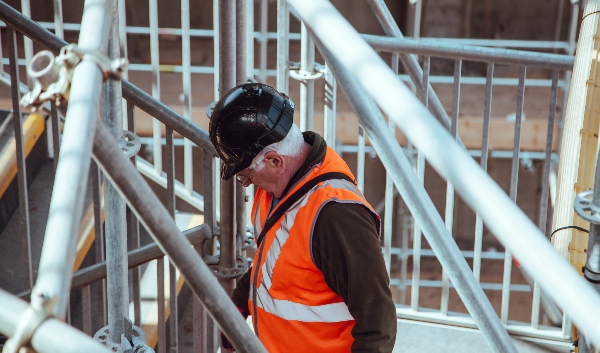
Air Tools Safety Tips
There are many advantages to using air tools for a project. Whether it’s a building renovation, a construction project, or a refurbishment, air tools are very useful.
Due to their compact and lightweight design, they can be easily handled and manoeuvred by construction workers which improves site efficiency. This makes them popular tools across construction sites around the world.
However, as with any piece of machinery, there are safety risks involved. From producing high levels of noise to generating a lot of force, they must be handled correctly to ensure the safety of everyone on site. Make sure you familiarise yourself with the safety precautions outlined above beforehand.
Compressed air is often used to drive pneumatic tools. This is an effective energy source as it provides a reliable and efficient high output that can be used to power an array of pneumatic tools.
At YardLink we provide a variety of air compressors to suit the requirements of your project. From portable air compressors to airless sprayers, our products are efficient and easy to use for numerous applications.
Give us a call or send us an enquiry to see how YardLink could benefit your project!
YOU MIGHT ALSO BE INTERESTED IN

